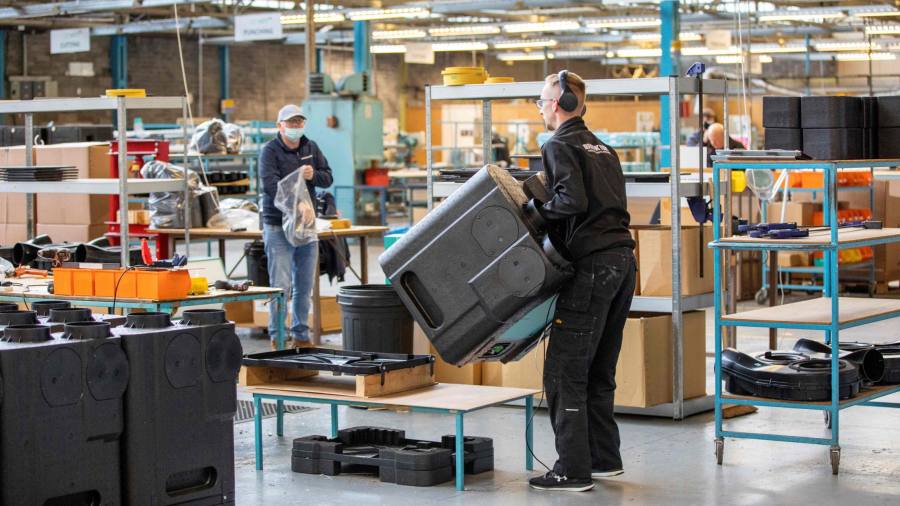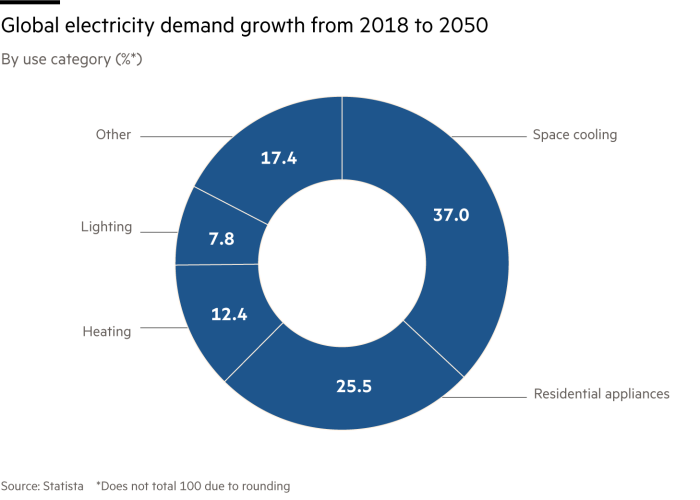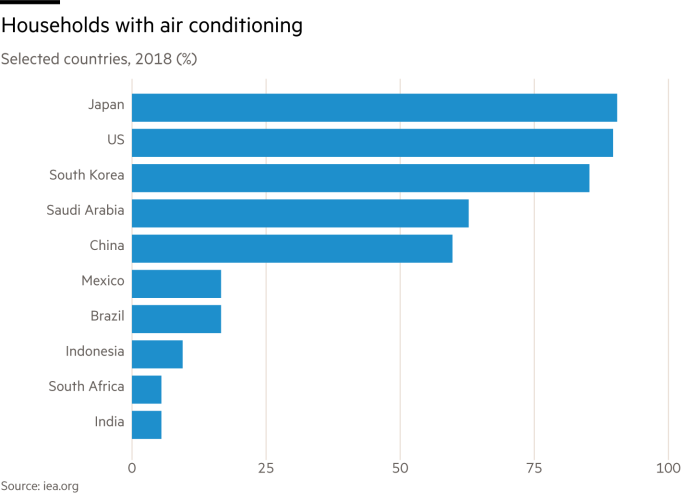
Receive free Climate change updates
We’ll send you a myFT Daily Digest email rounding up the latest Climate change news every morning.
Climate change is full of vicious feedback loops. Take air conditioning. The hotter it gets, the more of it we will need, leading to additional energy consumption and carbon emissions.
This is a burning issue. As temperature spikes in India, China and Texas highlight, air conditioning is already placing stress on energy production and creaking power grids. The penetration of space cooling systems has risen from 25 per cent in 2010 to 35 per cent in 2021, says the IEA. By 2050, electricity demand for cooling may triple from today’s 2,000 TWh to more than 6,000 TWh.

Even the UK — despite its reputation for dismal summers — is not immune. During the June heatwave, demand for cooling forced National Grid to switch on coal-fired power generation. As the climate warms up, air-con penetration might rise to more than 30 per cent by 2050, from less than 5 per cent today, estimates the UK Energy Research Centre. That could have significant impacts on emissions — but there is plenty that can be done to mitigate it.

As a starting point, assume a £2,500 household air-conditioning unit has 6kW of cooling capacity, and an efficiency of 200 per cent. If it ran 10 hours a day for 30 days during the year, it would consume 900 kWh of electricity. Given the UK’s emissions intensity is about 275g of CO₂ per kWh, that would imply household air-con emissions of 247kg of CO₂.
That could be cut in half simply by turning one’s air-con system on at midday, when homes are starting to get stuffy, rather than waiting until 6pm in the evening. After all, notes Richard Lowes at Exeter University, atmospheric heat correlates rather handily with the availability of solar power.
A further piece of good news is that, given the low penetration of space cooling in the UK today, most of the machines in future will be new models. These are twice as efficient, meaning they only need 1.5 kWh of power from the mains to deliver 6 kWh to the home. Running new equipment at the right time of day would cut household emissions by half again, from the original 247kg to about 60kg. And none of this factors in the fact that the emissions intensity of electricity is falling, anyway.
In the UK at least, cool-headed customers should be able to achieve comfortable temperatures without derailing the climate agenda.
Our popular newsletter for premium subscribers is published twice weekly. On Wednesday we analyse a hot topic from a world financial centre. On Friday we dissect the week’s big themes. Please sign up here.